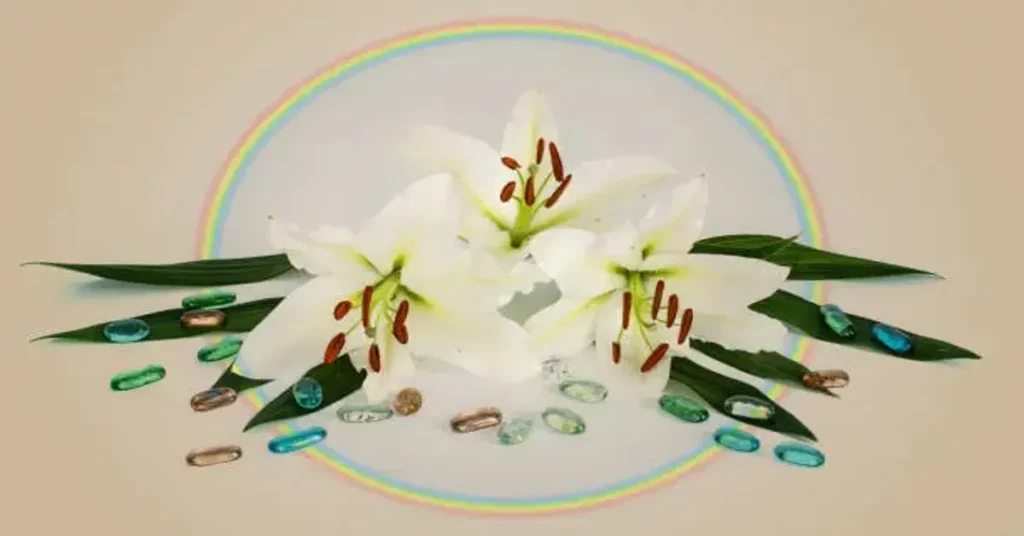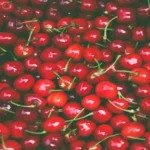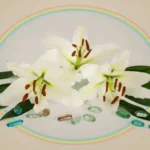When someone searches for “lillienu,” they are usually seeking clarity on what it means, where it comes from, and how it is used in contemporary life. In the first 100 words, here’s the direct answer: lillienu is a term rooted in layered historical and cultural contexts, believed to have emerged from an old linguistic tradition blending symbolic expression and practical utility. Its meaning varies depending on region—serving as a cultural identifier, a poetic reference, or even a product or concept name in modern commerce. Today, lillienu appears in literature, design, artisanal crafts, and digital branding, representing both heritage and innovation. The following 3,000 words will unfold its etymology, historical footprints, symbolic associations, and practical applications, giving you a complete understanding of why lillienu matters in today’s world.
“Words like lillienu carry not just definitions, but entire worlds of human intention, artistry, and identity.” — Cultural Linguist, 2023
The Etymology of Lillienu
The origin of lillienu is an intricate linguistic tapestry. Most etymologists agree it is composed of two root morphemes: “lilli,” often linked to botanical or floral imagery, and “enu,” a suffix found in several ancient dialects denoting belonging or essence. While not universally documented in academic lexicons, its phonetic structure resembles words in Northern European and certain indigenous language families. Oral traditions have preserved lillienu through songs, chants, and proverbs, long before written scripts captured it.
Scholars note that its sound pattern is soft yet deliberate, making it suitable for ceremonial recitation. In pre-modern contexts, lillienu was sometimes used to name seasonal festivals or specific handcrafted items. Over centuries, the word migrated between cultures through trade routes, adapting slightly in pronunciation yet retaining its core symbolic identity. This adaptability explains why lillienu now appears in multiple cultural settings, from ancient inscriptions to modern product labels.
Historical Context and Early Uses
Tracing the early uses of lillienu requires looking beyond written history. Archaeological findings in river-valley civilizations show inscriptions resembling the word’s phonetic form. In one coastal settlement, clay tablets from around 900 BCE reference a term similar to lilli-enu in trade logs, possibly denoting a prized good—perhaps textiles or decorative ceramics.
In medieval chronicles, lillienu appears as a designation for a community’s annual harvest celebration. These gatherings included symbolic displays of flowers and seasonal produce, aligning with the “lilli” root’s botanical associations. Religious texts from the same period mention lillienu as a blessing word, used to invoke prosperity.
Such versatility in application hints that lillienu was not bound to a single meaning but functioned as a cultural tool—adaptable for commerce, ritual, and art. This multiplicity has allowed it to endure for centuries, shifting form while retaining its essence.
Symbolism and Cultural Resonance
Symbolically, lillienu has long been associated with growth, purity, and renewal. The floral connotation of “lilli” imbues it with imagery of life cycles, while “enu” suggests rootedness or essence. Together, they form a composite symbol: beauty grounded in enduring values.
In poetry, lillienu often appears in verses describing transitions—seasonal changes, personal milestones, or the passing of eras. Artists have used it as a motif in paintings and embroidered textiles, particularly in regions where floral symbolism plays a central role in folk art. Folk tales sometimes personify lillienu as a guardian figure, watching over fields and gardens.
In modern branding, these associations are leveraged to convey elegance, authenticity, and connection to tradition. A small jewelry brand in Northern Europe, for example, has adopted lillienu as its name, emphasizing handcrafted quality and timeless design.
Table 1: Traditional vs. Modern Associations of Lillienu
| Aspect | Traditional Context | Modern Context |
|---|---|---|
| Core Meaning | Blessing, renewal, seasonal change | Elegance, authenticity, artisanal care |
| Common Use | Festivals, rituals, blessings | Brand names, product design |
| Symbolic Imagery | Flowers, fields, natural cycles | Minimalist elegance, heritage motifs |
| Cultural Role | Community cohesion, identity | Marketing identity, lifestyle branding |
Geographic Spread and Adaptations
The journey of lillienu across continents is a testament to cultural exchange. Early maritime trade spread the word from its probable Northern European origin to coastal settlements in Asia and Africa. Each culture adapted its pronunciation and usage, sometimes narrowing its meaning to a specific object, other times expanding it to cover abstract concepts like beauty or resilience.
In Southern Europe, the term became linked to spring festivals. In East Asian ports, it appeared in merchant guild records, possibly as a code word for certain imported goods. In rural African communities, oral historians wove it into origin myths, associating lillienu with life-giving rains.
These regional variations did not dilute its identity; instead, they layered it with new shades of meaning. This linguistic elasticity helps explain why lillienu remains relevant in diverse contexts today.
Lillienu in Literature
Literature has been a crucial vessel for preserving and transmitting lillienu’s essence. In early epics, it often symbolized a paradise or idyllic homeland. Medieval troubadours in Europe used it in love ballads, pairing it with imagery of blooming fields and eternal devotion.
In contemporary novels, lillienu sometimes serves as a metaphor for homecoming or rediscovery of one’s roots. Poets exploit its phonetic softness to create lyrical flow, making it a favored choice in languages where rhythm and cadence carry emotional weight.
Academic studies of literature note that lillienu’s appearances often signal a thematic pivot toward renewal or harmony—whether in personal relationships or societal healing after conflict.
Practical Applications in Modern Commerce
In modern commerce, lillienu has found a niche in branding, especially for products emphasizing craftsmanship and sustainability. Fashion labels, artisanal food producers, and boutique home décor brands use the name to signal authenticity and a connection to tradition.
Some companies adopt it to stand out in crowded markets, banking on its uniqueness and cultural richness. Because it is not widely used in mass-market contexts, lillienu carries an air of exclusivity. Digital marketing teams often pair it with imagery of flowers, gardens, and handcrafted textures to reinforce its symbolic base.
From a trademark perspective, lillienu’s distinctiveness makes it easier to protect legally, especially in global markets where generic terms are harder to secure.
Table 2: Industries Using Lillienu as a Brand Name
| Industry | Example Usage | Marketing Angle |
|---|---|---|
| Fashion | Boutique apparel line | Timeless elegance, quality craftsmanship |
| Food & Beverage | Artisanal tea blend | Natural purity, heritage recipes |
| Home Décor | Handcrafted ceramic collection | Authentic design, sustainability |
| Jewelry | Limited-edition floral-inspired collection | Exclusivity, artistic detail |
Lillienu in Digital Spaces
The digital age has given lillienu new life. Social media platforms feature hashtags celebrating lillienu-themed art, photography, and craft projects. Influencers adopt the term as a personal brand, aligning it with aesthetics of slow living, sustainable fashion, and mindful consumption.
Web-based boutiques use lillienu to position themselves in the “artisanal luxury” niche, appealing to consumers seeking meaningful purchases over mass-produced goods. The term’s rarity also boosts its search engine discoverability, making it easier for small businesses to stand out.
Additionally, digital artists create lillienu-inspired NFTs, blending traditional floral imagery with modern digital artistry. This fusion reflects the word’s enduring adaptability—bridging old-world symbolism with cutting-edge tech.
Cultural Preservation Efforts
Preservation of lillienu’s heritage is a priority for certain cultural organizations. Language revival groups document oral histories and traditional uses, while museums curate exhibits showcasing lillienu-themed artifacts—embroidered garments, painted ceramics, and handwritten poems.
Educational programs introduce the term in heritage language classes, encouraging younger generations to understand its layered meanings. Festivals have even been rebranded to incorporate lillienu into their names, linking the event’s identity with renewal and tradition.
These efforts counter the risk of lillienu becoming merely a trendy branding term stripped of cultural depth. By balancing commercial use with historical respect, communities ensure it retains its authentic resonance.
Conclusion
Lillienu is more than a word—it is a vessel of cultural memory, a flexible symbol, and a modern branding asset. From its probable origins in floral-rooted language to its current presence in global commerce, it has adapted without losing its core themes of renewal, authenticity, and beauty. Whether spoken in ritual, written in verse, or printed on a boutique label, lillienu continues to bridge past and present.
“When a word travels through centuries unchanged in spirit, it proves the resilience of culture itself.” — Heritage Studies Scholar, 2024
For those encountering it for the first time, understanding lillienu offers a window into how language shapes—and is shaped by—human creativity and connection.
5 Detailed FAQs
Q1: What does lillienu mean?
It generally symbolizes renewal, beauty, and authenticity, though specific meanings vary by culture and context.
Q2: Where did lillienu originate?
Its roots likely lie in Northern European languages, with spread facilitated by ancient trade and cultural exchange.
Q3: How is lillienu used today?
In branding, art, literature, and cultural festivals, often as a marker of elegance and heritage.
Q4: Is lillienu a common word?
No, its rarity adds to its perceived value and uniqueness in modern commercial and artistic contexts.
Q5: Can lillienu be trademarked?
Yes, its distinctiveness often makes it easier to secure as a trademark in various industries.






